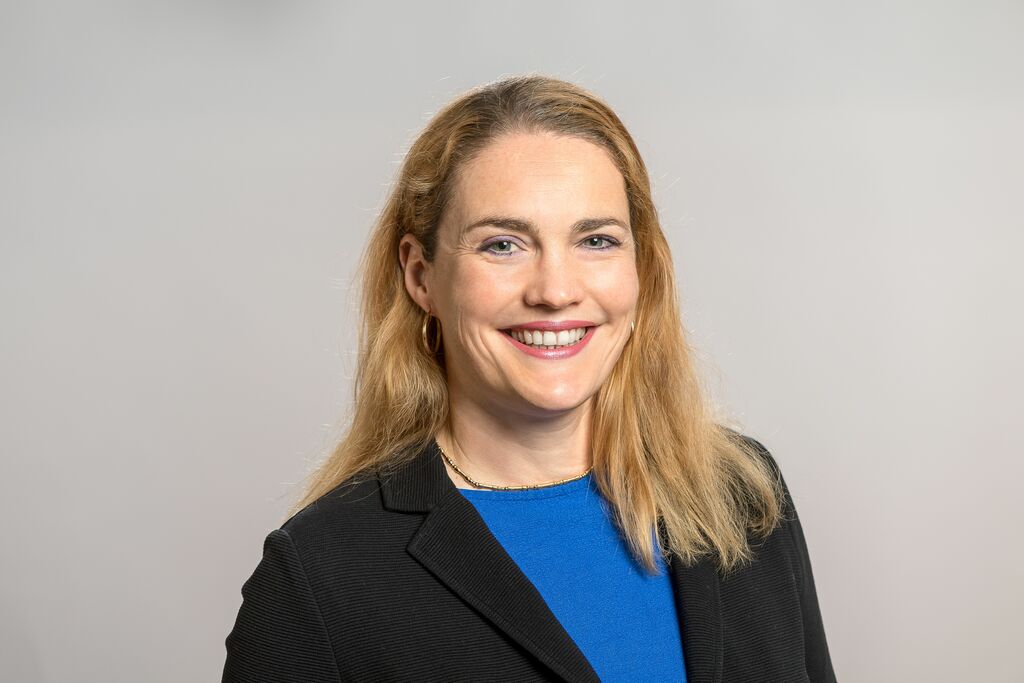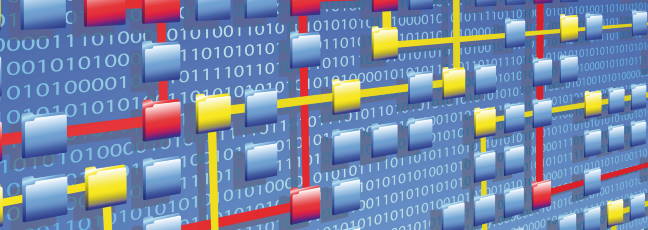Academic stories: Stefanie Rinderle-Ma
academic stories conference room exploring newlandNarrated by Stefanie Rinderle-Ma
 My name is Stefanie Rinderle-Ma. I am a full professor and head of the Chair of Information Systems and Business Process Management at the Department of Informatics at the Technical University of Munich, Germany. In our research, my team and I focus on flexible and distributed process technology and systems, digitalized compliance management, and – of course – process mining. We have experience in different application areas such as manufacturing and healthcare. Our mission is to conduct fundamental research with the prospect of making an impact in practice.
My name is Stefanie Rinderle-Ma. I am a full professor and head of the Chair of Information Systems and Business Process Management at the Department of Informatics at the Technical University of Munich, Germany. In our research, my team and I focus on flexible and distributed process technology and systems, digitalized compliance management, and – of course – process mining. We have experience in different application areas such as manufacturing and healthcare. Our mission is to conduct fundamental research with the prospect of making an impact in practice.
The first time to dig into process mining was during my postdoc time at Ulm University, when I co-supervised the Master’s thesis of Linh Thao Ly (together with Manfred Reichert and Peter Dadam) in 2005. Thao was looking into the discovery of staff assignment rules from event logs, that is, discovering the rules that specify who is supposed to access and work on which activity in the process during runtime. We published this work at the BPI 2005 workshop, being probably one of the first process mining approaches to look from the organizational perspective, thus “beyond the control flow”. Then I spent a postdoc stay at the Technical University of Eindhoven at Wil van der Aalst’s group, at the beginning of 2006. There, I worked with Wil, Christian Günther, and Manfred on change mining – discovering the process of changes from a change log (published at CoopIS 2006). This work was motivated by the drive to understand how and why users change processes and followed up/complemented by joint work on combining change and case-based reasoning with Barbara Weber and Manfred. This early and the following work on process mining was motivated and coined by understanding process behavior from different perspectives – again, beyond control flow and from a human standpoint. Also, the process mining research perfectly tied in with our work on process compliance starting around 2006.
A special moment in research is when you make a fundamental contribution that lasts over time and attracts follow-up work. In this sense, the “Eureka!” moment was to receive the first BPM test of time award in 2013 (together with Manfred and Peter) for my very first publication on correctness criteria in flexible business processes presented at the very first BPM conference in 2003. Another special moment that arrives probably a bit later in an academic career is when you feel “the dots connect”, that is, you can draw conclusions that span over several research insights, areas, and experiences that you have made. Such a moment occurred, for example, during the preparation of my keynote at last year’s BPM conference, where I discussed the connection between process mining and process automation. I understood that, having a strong system perspective, we can substantially contribute to the contextualized collection of process data which, in turn, enables the derivation of novel insights and also requires novel process mining and analysis techniques. An example of this is the exploitation of sensor data shaping the context of a process that enables the prediction of unforeseen process behavior.
Connected to the point before, the tight interconnection between process automation and process mining is super interesting and challenging to us. Process automation covers a spectrum of scenarios from RPA over process orchestration to process choreographies with low and high human involvement. The system perspective directly calls for some actions. First: consider process perspectives beyond control flow. Second: take a sharp look at the definition of the granularity of process activities and tasks. Third: rethink the definition of the process instance or case — in the manufacturing area, for example, this can be the product, the part, or the batch. All these factors directly impact the data collection and, in turn, the opportunities for gaining insights and optimizing processes.
From the process mining perspective, we constantly talk to our industry partners and see that there is great interest in online algorithms such as online conformance checking with a focus on time and data. In other words, they want to learn about possible deviations as soon as possible – for example, about deviations in the temporal perspective of a process instance indicating that a person stepped into the safety area of a machine and triggered the shutdown of this machine. Another example is the observation of drifts in the data indicating an upcoming problem and consequently a drift in the control flow.
Overall, process mining and automation are megatrends right now and will stay megatrends in the next years, as far as I see it. This puts research in process mining and more generally in business process management in the well-deserved, proper spotlight.
If you ask me, I am interested in the seamless integration of process automation with continuous optimization through process mining, emphasizing online, predictive and prescriptive techniques to put humans in the loop. We need richer data sets: event logs and streams with different event types, process data, and connections to external data sources. Moreover, more attention should be spent on the system’s perspective – for instance, understanding activities not only as labels, but as the rich constructs they are. This is also connected with the question on the granularity with which you are collecting and logging your data. Activities have a life cycle, they process data, include resources, and invoke services or application programs.
To conclude, I am happy to say I have the joy and honor to work with a great team towards making BPM 2022 a success. I am really looking forward to an in-presence conference in beautiful Münster. Last year, being in Rome for BPM 2021 was such a great joy and inspiration! What I can tell about the program at this moment is that we have a great line-up of keynote speakers: Chiara Ghidini, Jan Mendling, and Gero Decker! As an inspiration, process mining researchers might want to take a look at the word cloud of last years’ BPM conference titles as presented on Twitter. I can read some great topics from this word cloud, including time, data, and drifts. I also want to encourage researchers to shape this picture by taking inspiration particularly from real-world problems in challenging application domains.
- This article has been updated on April 29 2022, 15:14.
- Narrated by Stefanie Rinderle-Ma

